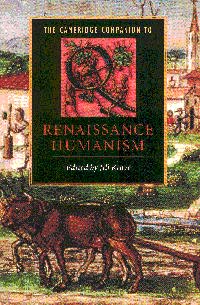Book contents
- Frontmatter
- 1 The origins of humanism
- 2 Classical scholarship
- 3 Humanism in script and print in the fifteenth century
- 4 The humanist reform of Latin and Latin teaching
- 5 Humanist rhetoric and dialectic
- 6 Humanists and the Bible
- 7 Humanism and the origins of modern political thought
- 8 Philologists and philosophers
- 9 Artists and humanists
- 10 Vernacular humanism in the sixteenth century
- 11 The new science and the traditions of humanism
- 12 Humanism and Italian literature
- 13 Humanism and English literature in the fifteenth and sixteenth centuries
- 14 Humanism and seventeenth-century English literature
- A guide to further reading in English
- Biographical index
11 - The new science and the traditions of humanism
Published online by Cambridge University Press: 28 May 2006
- Frontmatter
- 1 The origins of humanism
- 2 Classical scholarship
- 3 Humanism in script and print in the fifteenth century
- 4 The humanist reform of Latin and Latin teaching
- 5 Humanist rhetoric and dialectic
- 6 Humanists and the Bible
- 7 Humanism and the origins of modern political thought
- 8 Philologists and philosophers
- 9 Artists and humanists
- 10 Vernacular humanism in the sixteenth century
- 11 The new science and the traditions of humanism
- 12 Humanism and Italian literature
- 13 Humanism and English literature in the fifteenth and sixteenth centuries
- 14 Humanism and seventeenth-century English literature
- A guide to further reading in English
- Biographical index
Summary
Constantijn Huygens was one of the most virtuous of the seventeenth-century virtuosi who collected antiquities, devised scientific instruments and cultivated a taste for natural curiosities. He painted, wrote poetry in several languages and played the lute for the king of England. The most modern English thinkers and writers appealed to him: he translated John Donne into Dutch and copied out Francis Bacon's theories about progress. He loved the humanist art of Rubens, but recognized the young Rembrandt's supremacy as a history painter. His unfinished classic in Dutch, the Dagwerck, celebrated the discoveries of the new science, which he tried to connect with the domestic life of the Dutch Golden Age, the sunny world of scrubbed tile floors, tables covered by rich rugs and crystalline windows so memorably depicted by Vermeer.
Huygens came honestly by his wide range of skills and interests: he was raised to have them. His father had him taught to speak French by the direct method as a child and encouraged him to study science, music and painting. As a teenager he enrolled at Leiden, the most modern university of his day.
- Type
- Chapter
- Information
- The Cambridge Companion to Renaissance Humanism , pp. 203 - 223Publisher: Cambridge University PressPrint publication year: 1996
- 7
- Cited by



